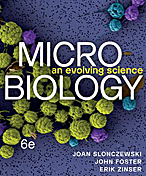Bacteroides finegoldii
Classification
Higher order taxa
Bacteria; Bacteroidetes; Bacteroidetes; Bacteroidales; Bacteroidaceae; Bacteroides
Species
Bacteroides finegoldii
Description and significance
General Background
B. finegoldii is a strictly anaerobic, Gram-negative rod bacteria that occurs in human feces.
Morphology
Metabolism
The optimum temperature for growth is about 37 C. B. finegoldii produces acid is fro–4.5 mm long, and occur singly. Colonies are 1–2 mm in diameter, circular, translucent–whitish, raised and convex.m the metabolism of glucose, lactose, sucrose, maltose, salicin, xylose, arabinose, cellobiose, mannose, raffinose and rhamnose. The bacteria grows in the presence of bile.
Current Research
Include information about how this microbe (or related microbes) are being studied and for what purpose
References
Edited by (Inert your name here), student of Rachel Larsen at the University of Southern Maine
